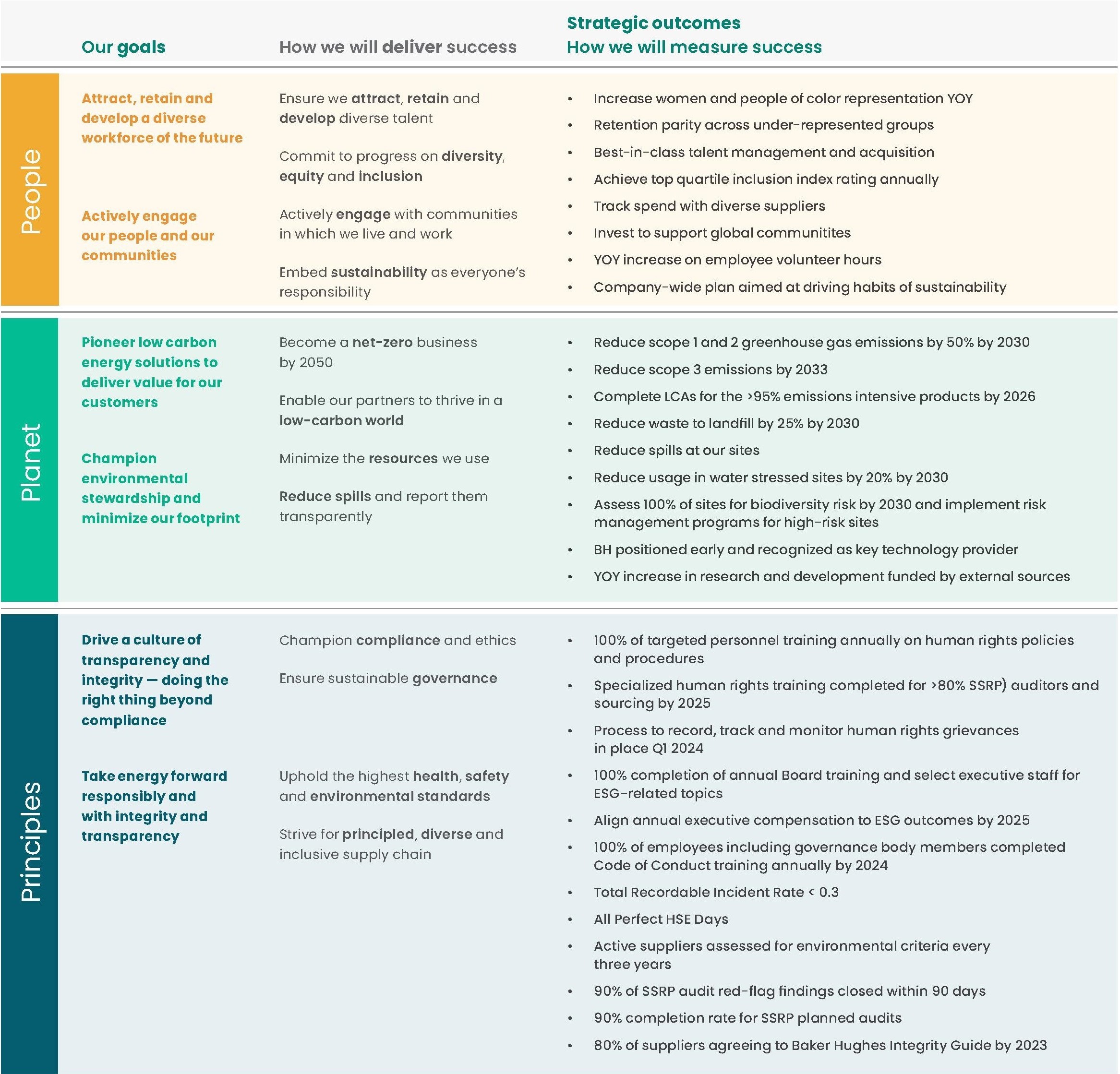Our sustainability strategy
Our strategy consists of six goals that serve as the framework for operationalizing sustainability and will help us to achieve our long-term vision. Our goals are delivered through objectives linked to the most important issues. Our strategic outcomes are how we measure success.

Materiality assessment
Baker Hughes is dedicated to advancing sustainability practices across our People, Planet, and Principles initiatives
We seek input from internal and external stakeholders to assess and adjust our priorities in response to the evolving global dynamics. Our structured materiality assessment is a critical foundation for our sustainability strategy and ensures our alignment with issues that may impact our business, communities, and planet. This assessment is updated at least biannually and was last updated in 2022.
Our approach to the materiality assessment
Our materiality assessment was conducted using best practice methodologies and informed by the guidance of the most widely recognized, including the Global Reporting Initiative (GRI) and the Sustainability Accounting Standards Board (SASB). Our analysis is primarily based on surveys of stakeholder sentiment on ESG topics and included viewpoints and responses from various stakeholder groups, including investors, customers, governments, educational institutions, trade associations, and employees, to identify topics of importance.
After survey data was collected, follow-up interviews were completed and analyzed. We utilized best practice to position topics relative to the degree of stakeholder interest and potential business impact on the following materiality matrix. The position on the chart provides the averaged level of concern or opportunity conveyed by the stakeholder. For a topic to be shown on the chart, multiple survey participants had to indicate that the issue was of interest.



